
600mm x 760mm Heavy Duty Square Audio Dj Concert Stage Aluminum Light Entertainment Event Truss Aluminum Screw Bolted Truss



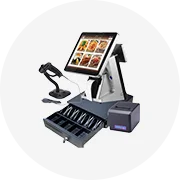
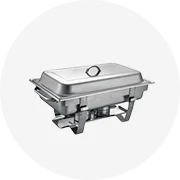
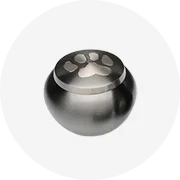
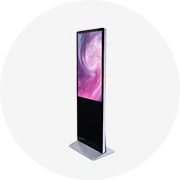

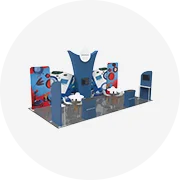
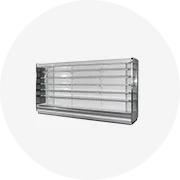
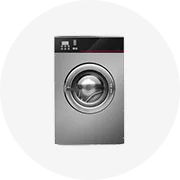
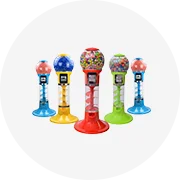
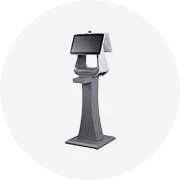


Illuminating the stage is an art that transforms performances into unforgettable experiences. The right stage lighting frames not only enhance the visual appeal but also set the mood and direct the audience's attention. Whether it's a dramatic spotlight in a theater production or a vibrant wash of color at a concert, the choice of lighting frames is pivotal. This guide delves into the nuances of selecting the perfect stage lighting frames, from the sharp precision of profile lanterns to the dynamic versatility of moving head fixtures. We'll explore the vast array of options available on our platform, examine key features to consider, and provide practical advice on installation and maintenance, ensuring that your stage lighting not only captivates but also endures.

Stage lighting frames, integral to theatrical and event productions, come in various types, each with unique features and applications. Profile lanterns, for instance, utilize Plano-convex lenses to produce sharp or soft light spots and can be shaped into squares or other forms using internal shutters. These are essential for highlighting specific stage elements and can project images using a 'GOBO'.
Fixed profiles offer a set beam size with adjustable lens sharpness, while zoom profiles provide flexibility in beam size and sharpness, catering to dynamic lighting needs. The beam angle, indicated in degrees, determines the light coverage, with larger angles offering broader but less intense light.
Fresnel lanterns, with their soft, even wash, are favored for stage color washes and backlighting in both theater and film. P.C. fixtures offer a similar wash but with slightly sharper edges due to their pebbled lens design.
PAR cans, known for their soft, oval beams, are versatile for washing large areas or creating aerial effects. They come in various sizes and beam angles, from very narrow spots to wide floods, and their bulb can be rotated to adjust the beam's direction.
Moving head spots and washes provide comprehensive control over light attributes, including intensity, color, and beam shape, all remotely operated from a console. Hybrid fixtures combine the functions of spots and washes, offering versatility but with some trade-offs in feature specialization.
Understanding these lighting frames' types, features, and applications is crucial for creating the desired ambiance and focus in a production, making them a pivotal component of stage design.

Exploring the variety of stage lighting frames on our platform reveals a range of options suitable for different event needs. The selection includes robust aluminum truss systems, which come in various shapes like single tube, ladder, I-beam, triangle, and square configurations. These trusses are designed to support lighting setups for concerts, clubs, and outdoor events, providing a reliable foundation for any lighting design.
For those seeking customizable solutions, there are offerings like the adjustable leg stage frames and the portable aluminum staging options. These are versatile for different stage designs and are particularly useful for events that require quick setup and teardown. The truss systems available also cater to elaborate setups, suitable for trade shows and outdoor exhibits.
Specialized lighting frames, such as the high-performance LED profile moving head beams and spot wash lights, cater to professional lighting requirements. These frames are engineered to accommodate complex lighting arrangements, ensuring that every angle of the stage is illuminated. Additionally, eco-friendly used aluminum truss systems offer a sustainable option for event organizers conscious about environmental impact.
Lastly, for grand scale events, heavy-duty aluminum truss stage frames are available, capable of creating large background structures for concerts and festivals. These durable frames ensure safety and stability, even in demanding conditions, making them a reliable choice for event planners and production teams.
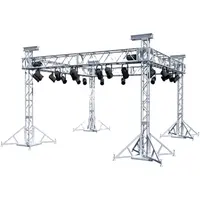
When selecting stage lighting frames, it's essential to consider features that enhance versatility and control. Fresnels offer adjustable beam sizes, from a narrow spot to a wide flood, and are equipped with barn doors to shape the light and prevent spill. Profiles, or ellipsoidals, provide the most control, allowing for hard or soft-edged beams, adjustable beam sizes through lenses or an iris, and precise shaping with internal framing shutters. They can also project patterns using gobos. For dynamic lighting needs, moving lights, including spots and washes, offer remote control over color, beam size and shape, and positioning, making them a flexible choice for various stage applications.
LED technology in lighting frames like LED PARs and floodlights has become prominent due to their ability to change colors without gels and maintain cooler temperatures. The design of their lenses is specialized to distribute light evenly, similar to traditional floodlights, but with the added benefits of LED efficiency. When considering lighting frames, the ability to control the beam's edge, shape, and size, as well as the ease of color change, are key features that can significantly impact the lighting design and functionality on stage.
Stage lighting frames are integral components in the construction of various event structures, particularly in the creation of truss trade show booths. The versatility of these frames allows for the construction of not only standard square booths but also more complex designs such as domes and arches. The materials used in these frames are predominantly aluminum alloys, known for their strength and lightweight properties. Aluminum truss systems are favored for their ease of assembly and flexibility in design, accommodating a range of event types from concerts to weddings. The durability of these materials ensures that they can support the weight of lighting and other equipment, making them a reliable choice for event planners and production teams.
Aluminum's natural resistance to corrosion and its impressive strength-to-weight ratio make it an ideal material for stage lighting frames. This ensures that the truss systems are not only portable but also durable enough to withstand the rigors of frequent setup and dismantling, which is common in the event industry. The use of aluminum alloy in these frames also allows for a variety of finishes, which can enhance the aesthetic appeal while providing an additional layer of protection. The adaptability of these materials means that they can be customized to fit specific design requirements, offering a practical solution for both indoor and outdoor events.
Aluminum stage lighting trusses, known for their light weight, offer significant advantages in terms of setup and durability. The inherent corrosion resistance of aluminum ensures that these trusses can withstand various environmental conditions, making them a reliable choice for both indoor and outdoor events. Their excellent compression resistance contributes to the overall stability of the structure, which is crucial when supporting lighting and sound equipment.
The design of these trusses, often based on triangular elements, provides enhanced stability due to the geometric strength of the shape. This structural integrity is essential when constructing stages that require safety and dependability. The use of aluminum also means that the trusses are not only strong but also relatively lightweight, which simplifies transportation and assembly, reducing labor and setup time.
Furthermore, the adaptability of aluminum stage lighting trusses to various settings underscores their versatility. They can be assembled into different configurations to suit specific event requirements, from concerts to corporate events. This flexibility, combined with the ease of maintenance and the long service life of aluminum, presents a cost-effective solution for event organizers and production companies looking for high-quality staging options.
Stage lighting frames, commonly known as aluminum alloy TRUSS frames, play a pivotal role in enhancing the visual impact of performances. These structures are integral to various settings, from outdoor temporary exhibition booths to the construction of complex stage designs. Their versatility allows for the creation of diverse shapes, catering to the event's specific requirements without being constrained by the location. The lighting frame, as the centerpiece of the truss stage, directly influences the stage's overall ambiance. In theaters, for instance, the array of lights mounted on these frames is crucial for depicting scenes and narratives, elevating the audience's experience beyond what is possible with basic headlight illumination. The truss stage's lighting frame, supporting spans up to 20 meters and heights of 7 meters, is typically constructed from aluminum alloy, favored for its balance of strength and lightness. This material choice reflects a shift from the previously used steel pipe, offering a more practical and efficient solution for modern staging needs.
To ensure the longevity and safety of stage lighting trusses, it's crucial to adhere to a strict installation process. Begin by assembling the main components, working from the inside out or bottom to top, avoiding any forced assembly that could induce stress or deformation. Appropriate lifting machinery and ample space are necessary to facilitate this process. Regular inspections post-installation are essential to maintain the integrity of the truss, especially since accidents have occurred in the past due to negligence in this area.
Improving the wear resistance and hardness of stage lighting trusses involves surface treatment technologies. Anodizing is a common method where the truss is submerged in an electrolyte solution and subjected to an electrical current, creating a protective oxide film. This film enhances the truss's resistance to corrosion, wear, and tear, although it's acknowledged that making the truss completely corrosion-free is not feasible.
Regular maintenance is key for the durability of stage lighting trusses. This includes cleaning to prevent chemical corrosion, checking connections, and lubricating moving parts as needed. If any part of the truss is bent, broken, or otherwise compromised, professional maintenance is advised. Environmental conditions can affect the truss's lifespan, which is typically around two years indoors and one year outdoors. By following these guidelines, the stability and safety of the truss system can be significantly enhanced.
Choosing the right supplier for stage lighting frames on Alibaba.com involves considering several factors to ensure reliability and product quality. Look for suppliers with a track record of specializing in stage lighting frames, such as those offering a variety of truss designs, including aluminum concert stage roof trusses and box truss systems. Suppliers who provide a range of options, from LED stage lights to non-slip aluminum stage systems, demonstrate a broad understanding of different event needs.
Evaluate the supplier's experience in the industry, which can often be indicated by the number of years they have been in business. Suppliers with a long history, such as those with 15 years of experience, are likely to have established manufacturing processes and a deep understanding of the market. Additionally, consider the diversity of their product offerings, which should include items like tempered glass LED dance floors and customizable truss structures, indicating their capability to cater to various staging requirements.
It's also important to assess the adaptability of the products offered. Suppliers that showcase innovative solutions, such as modular stages or frames that support LED screen backdrops, suggest an ability to keep up with industry trends and client demands. Lastly, while avoiding explicit endorsements, look for indications of professionalism and reliability, such as the breadth of their product range and the presence of detailed product descriptions, which can be a testament to their commitment to customer satisfaction.
In the world of stage production, lighting is a crucial element that can make or break the visual experience. Through this guide, we've navigated the complexities of choosing the right stage lighting frames, highlighting the importance of understanding different types, features, and materials. We've seen how aluminum trusses offer a blend of durability and flexibility, essential for any event. The applications of these frames extend from enhancing theatrical performances to anchoring grand festival stages. When selecting a supplier on Alibaba.com, the focus should be on experience, product diversity, and adaptability to ensure quality and innovation. Remember, the right lighting frames not only support the weight of your equipment but also the weight of your creative vision. By considering these insights, event planners and production teams can illuminate their stages with confidence, creating memorable events that resonate with their audiences.